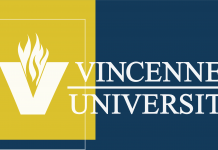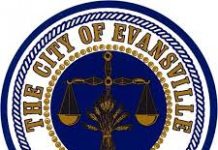UE Senate Seeks Answers About Institutional RealignmentÂ
Evansville— 1/21/21 —The University of Evansville (UE) Faculty Senate today endorsed a resolution that asks the President of the university, Christopher M. Pietruszkiewicz, to clarify how his institutional realignment process will proceed. The resolution passed by 13 votes to 2 with 1 absence. The faculty will now have seven days to vote on that resolution.Â
The passed resolution argues that, while the implementation of the President’s institutional realignment plan has begun, much remains unclear regarding all three of its parts: the academic, the administrative, and the athletic. The resolution begins by discussing the academic part of the institutional realignment plan. It notes that the President has frequently said that he wishes to invest in existing areas of the university and to add new programs, but he has yet to formally name any of those areas of investment or new programs. It is also observed that the President has so far not publicly stated who will make the decisions regarding those areas of investment and new programs.Â
The resolution then goes on to discuss the administrative and athletic aspects of the institutional realignment plan. After quoting the President’s statement that those aspects of the plan “were considered from the beginning of the process,†the resolution explains the faculty’s present relationship to the administrative and athletic parts of the institutional realignment plan:Â
The faculty has … received no data or information regarding how those areas were evaluated. The “Realignment†section of the university’s website publicly offers historical data on the faculty, but provides no such data on the Administration or Athletics. Indeed, at this time, the President has yet to even confirm whether or not he has received the analysis of the Athletics program that he requested from BKD.Â
The resolution continues by noting the faculty has a right to “involvement in the non-academic parts of the institutional realignment plan†because this is an aspect of shared governance. This idea is supported by a quote from the AAUP’s “Statement on Government of Colleges and Universities,†a document that was endorsed by the President and the Chair of the Board of Trustees in their August 26th letter to the faculty:Â
The allocation of resources among competing demands is central in the formal responsibility of the governing board, in the administrative authority of the president, and in the educational function of the faculty. Each component should therefore have a voice in the determination of short- and long-range priorities, and each should receive appropriate analyses of past budgetary experience, reports on current budgets and expenditures, and short- and long-range budgetary projections.Â
As the resolution observes, “when institutional budgetary decisions are made, the faculty is entitled to a voice in those determinations and to a number of different forms of data.†Therefore, “it is necessary for the faculty to be involved in all the budgetary decisions within the construction of the institutional realignment plan.â€Â
The resolution concludes by asking the President to offer written responses to twelve questions:Â
1. Why did the Senior Administrative Team publicly release an incomplete draft academic realignment plan that contains only proposed deletions and lacks any proposed additions?Â
2. What is the timeline for the proposed investments in existing programs and additions of new programs?Â
3. Who will make decisions regarding the proposed investments in existing programs and additions of new programs?Â
4. Will these program additions follow the procedure for “Curriculum Changes†outlined on p.219 of the Faculty Manual?Â
5. Will the faculty, the Senate or any committee thereof vote on the final complete academic realignment plan?Â
6. Did the Senior Administrative Team complete a full institutional review before the release of the draft academic realignment plan?Â
7. Why did the Senior Administrative Team not design its evaluation and decision-making processes to enable complete draft realignment plans for all areas to be released at the same time?Â
8. What is the timeline for the construction of the institutional realignment plan?Â
9. What criteria were used in the evaluations of the Administration and Athletics?Â
10. Will any of the data used within the evaluations of the Administration and Athletics be released to the faculty or made public?Â
11. How will the faculty be involved in the construction of the sections of the institutional realignment plan that relate to the Administration and Athletics?Â
12. Will the faculty, the Senate or any committee thereof vote on the final complete institutional realignment plan?Â
We, the UE chapter of the AAUP, fully support this resolution. The President and his team have met with both the faculty and the students over the last week, yet, due to the President’s refusal to offer direct answers to a number of basic questions, the institutional alignment process remains largely opaque. For many reasons, not least those of enrollment and retention, the President needs to immediately clarify how the institutional alignment process will work. We sincerely hope that he offers a full, detailed answer to every question within the Senate’s resolution.Â
To learn more:Â
• Visit our website at saveue.com • Follow us on Facebook at Save UEÂ
• Follow us on Twitter at @Save_UE • Follow us on Instagram at save.ueÂ
• E-mail us at ueaaup@gmail.comÂ




